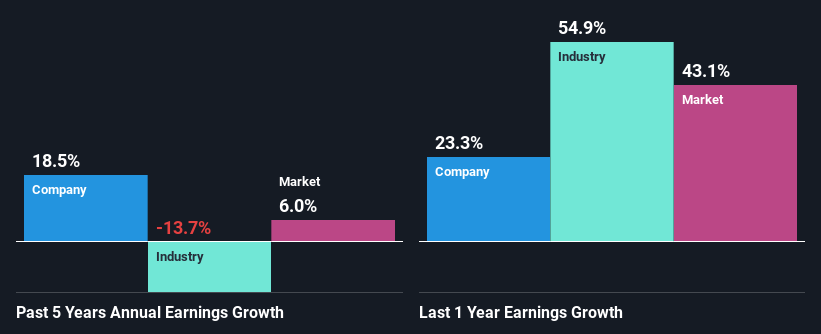Bloomsbury Publishing Plc (LON:BMY) Stock Has Shown Weakness Lately But Financials Look Strong: Should Prospective Shareholders Make The Leap?
Bloomsbury Publishing (LON:BMY) has had a rough month with its share price down 6.2%. However, a closer look at its sound financials might cause you to think again. Given that fundamentals usually drive long-term market outcomes, the company is worth looking at. Particularly, we will be paying attention to Bloomsbury Publishing's ROE today.
Return on equity or ROE is an important factor to be considered by a shareholder because it tells them how effectively their capital is being reinvested. Put another way, it reveals the company's success at turning shareholder investments into profits.
See our latest analysis for Bloomsbury Publishing
How Is ROE Calculated?
Return on equity can be calculated by using the formula:
Return on Equity = Net Profit (from continuing operations) ÷ Shareholders' Equity
So, based on the above formula, the ROE for Bloomsbury Publishing is:
10.0% = UK£17m ÷ UK£169m (Based on the trailing twelve months to February 2022).
The 'return' refers to a company's earnings over the last year. Another way to think of that is that for every £1 worth of equity, the company was able to earn £0.10 in profit.
What Has ROE Got To Do With Earnings Growth?
We have already established that ROE serves as an efficient profit-generating gauge for a company's future earnings. Based on how much of its profits the company chooses to reinvest or "retain", we are then able to evaluate a company's future ability to generate profits. Generally speaking, other things being equal, firms with a high return on equity and profit retention, have a higher growth rate than firms that don’t share these attributes.
Bloomsbury Publishing's Earnings Growth And 10.0% ROE
At first glance, Bloomsbury Publishing seems to have a decent ROE. Further, the company's ROE is similar to the industry average of 9.9%. Consequently, this likely laid the ground for the decent growth of 18% seen over the past five years by Bloomsbury Publishing.
When you consider the fact that the industry earnings have shrunk at a rate of 14% in the same period, the company's net income growth is pretty remarkable.
Earnings growth is a huge factor in stock valuation. The investor should try to establish if the expected growth or decline in earnings, whichever the case may be, is priced in. By doing so, they will have an idea if the stock is headed into clear blue waters or if swampy waters await. What is BMY worth today? The intrinsic value infographic in our free research report helps visualize whether BMY is currently mispriced by the market.
Is Bloomsbury Publishing Making Efficient Use Of Its Profits?
With a three-year median payout ratio of 43% (implying that the company retains 57% of its profits), it seems that Bloomsbury Publishing is reinvesting efficiently in a way that it sees respectable amount growth in its earnings and pays a dividend that's well covered.
Besides, Bloomsbury Publishing has been paying dividends for at least ten years or more. This shows that the company is committed to sharing profits with its shareholders. Our latest analyst data shows that the future payout ratio of the company over the next three years is expected to be approximately 47%. As a result, Bloomsbury Publishing's ROE is not expected to change by much either, which we inferred from the analyst estimate of 12% for future ROE.
Conclusion
On the whole, we feel that Bloomsbury Publishing's performance has been quite good. Specifically, we like that the company is reinvesting a huge chunk of its profits at a high rate of return. This of course has caused the company to see substantial growth in its earnings. Having said that, the company's earnings growth is expected to slow down, as forecasted in the current analyst estimates. To know more about the latest analysts predictions for the company, check out this visualization of analyst forecasts for the company.
Have feedback on this article? Concerned about the content? Get in touch with us directly. Alternatively, email editorial-team (at) simplywallst.com.
This article by Simply Wall St is general in nature. We provide commentary based on historical data and analyst forecasts only using an unbiased methodology and our articles are not intended to be financial advice. It does not constitute a recommendation to buy or sell any stock, and does not take account of your objectives, or your financial situation. We aim to bring you long-term focused analysis driven by fundamental data. Note that our analysis may not factor in the latest price-sensitive company announcements or qualitative material. Simply Wall St has no position in any stocks mentioned.


